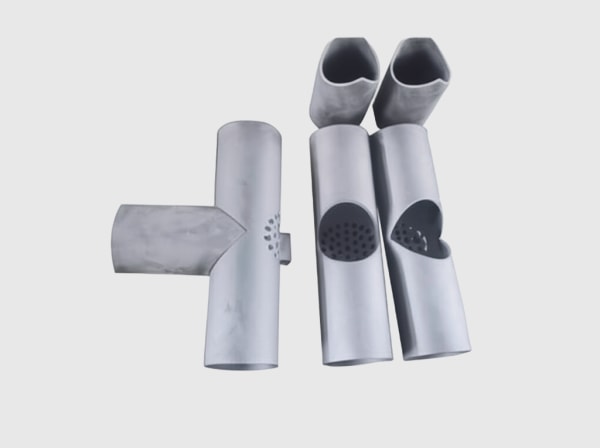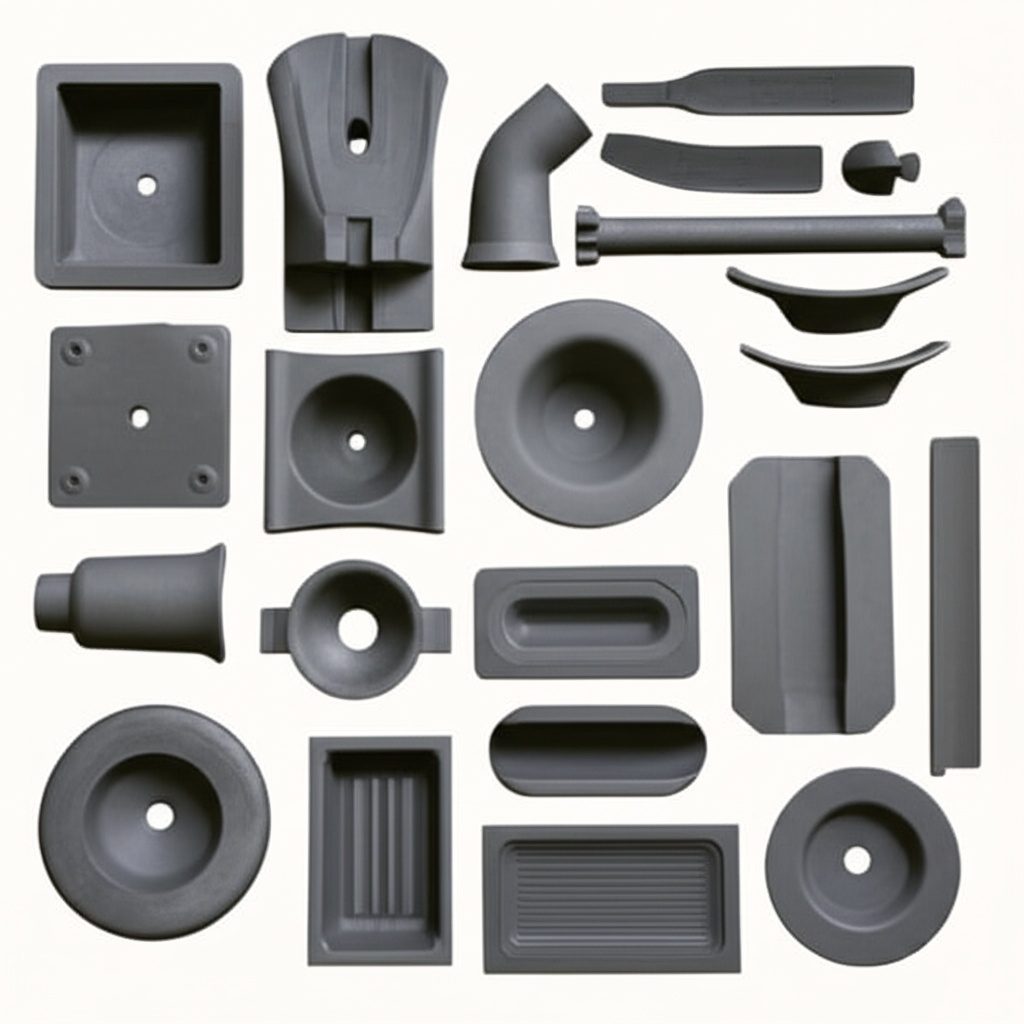PF >0.99 및 THDi <5%를 달성하는 산업 부하용 고주파 SiC PFC 제어 장치

공유
파키스탄용 2025년 제품 개요 및 시장 관련성
High-frequency silicon carbide (SiC) power factor correction (PFC) control units are the brains of ultra‑efficient AC front ends for UPS, VFDs, rectifiers, and high‑power industrial power supplies. By coordinating SiC MOSFETs and SiC Schottky diodes in bridgeless totem‑pole or interleaved boost topologies at 50–100 kHz, these controllers deliver PF >0.99 and THDi <5% at the Point of Common Coupling (PCC)—even under voltage sags, load steps, and harmonic‑rich grids.
This is a strategic upgrade for Pakistan’s textile, cement, and 강철 plants—and for data centers and industrial parks in Karachi, Lahore, and Faisalabad—where grid instability, heat, and dust elevate downtime risk and energy costs:
- Efficiency and compliance: Raising input PF and suppressing current harmonics cuts transformer heating and utility penalties, while boosting end‑to‑end converter efficiency toward and beyond 98%.
- Compact retrofits: High switching frequency enables smaller magnetics and filters, reducing cabinet volume by 30–40%—ideal for brownfield electrical rooms.
- Resilience: Fast digital control loops stabilize DC links during sags and flicker, protecting continuous processes and IT loads.
- Fast deployment: Modular control units integrate sensing, gate-drive coordination, and communications, accelerating commissioning with local SCADA and BMS.
Sicarb Tech’s PFC control units integrate high‑CMTI isolated gate drivers, precision current/voltage sensing, adaptive digital control, predictive diagnostics, and OT‑grade communications. Backed by the Chinese Academy of Sciences and 10+ years of SiC manufacturing and control expertise, we deliver turnkey front‑end performance for Pakistan’s mission‑critical facilities.

기술 사양 및 고급 기능
- Electrical and control
- Topologies: Bridgeless totem‑pole PFC (CCM/BCM), interleaved boost PFC (2–4 phases)
- Input: 3‑phase 400–480 V (690 V variants with 1700 V SiC), 50/60 Hz
- Output DC link: 700–1100 Vdc nominal for UPS/VFD front‑ends
- Switching frequency: 50–100 kHz with adaptive frequency and interleaving phase shedding
- PF and harmonics: PF >0.99 at rated load; THDi <5% at PCC with tuned LCL/LCL‑trap filters
- Efficiency contribution: Front‑end stage ≥98% at nominal load, >97% from 30–100% load
- 감지 및 보호
- High‑accuracy shunt or fluxgate current sensing; isolated voltage sensing
- Grid anomaly detection: sag/swell, phase loss, imbalance, and flicker; fast feed‑forward compensation
- Fault handling: OCP, OVP/UVP, OTP, surge protection; soft‑start and inrush management
- Gate drive and isolation
- Reinforced isolation, CMTI ≥150 kV/μs for SiC dv/dt immunity
- Programmable gate resistance, Miller clamp, DESAT soft turn‑off (<3 μs)
- 열 및 기계
- Thermal management: SSiC/RBSiC heat spreaders; conduction or liquid cooling options
- Environmental robustness: Conformal coating; dust‑resistant airflow; H3TRB‑tested subassemblies
- Operating ambient: −20°C to +50°C typical (higher with derating and enhanced cooling)
- Control, diagnostics, and interoperability
- Digital control: Dual‑loop average current mode with fast voltage loop; adaptive harmonic cancellation; line impedance estimation
- Predictive maintenance: Capacitor ESR trend, inductor temperature, fan tach, connector hotspot monitoring; RUL estimation
- Communication: IEC 61850 MMS/GSE, Modbus TCP/RTU, SNMP v3; IEEE 1588 PTP time sync for event correlation
- Cybersecurity: RBAC, signed firmware, audit logs
Performance Comparison: SiC High-Frequency PFC Control Units vs. Conventional Silicon PFC Controllers
| 기능 | SiC High-Frequency PFC Control Unit (Sicarb Tech) | Conventional Silicon PFC Controller | Practical Impact for Pakistan Sites |
|---|---|---|---|
| PF and harmonics | PF >0.99, THDi <5% at PCC | PF ~0.95, THDi 10–20% | Fewer penalties, cooler transformers/cables |
| 스위칭 주파수 | 50–100 kHz | 10–20 kHz | 30–40% smaller magnetics and filters |
| 부하 시 효율성 | ≥98% stage | 90–94% typical | Lower PKR energy and HVAC cost |
| Grid sag handling | Fast feed‑forward, DC‑link stabilization | Limited | Fewer trips in summer peaks |
| 진단 | Predictive maintenance, RUL analytics | Basic alarms | >40% reduction in unexpected failures |
주요 장점 및 입증된 이점
- Utility compliance and energy savings: Achieve PF >0.99 and THDi <5% with measurable kWh and cooling reductions.
- Compact, modular integration: High‑frequency control reduces passive size and cabinet footprint, accelerating brownfield upgrades.
- Robust against grid disturbances: Fast digital loops and soft‑recovery strategies maintain DC link stability and protect downstream inverters.
- Lifecycle visibility: Embedded analytics forecast capacitor and fan replacement, minimizing unplanned downtime.
전문가 관점:
- “Totem‑pole PFC with SiC devices achieves near‑unity power factor with lower losses and higher density, especially at elevated switching frequencies.” — IEEE Power Electronics Magazine, 2024 Wide Bandgap Front‑Ends (https://ieeexplore.ieee.org/)
- “In industrial grids, harmonic mitigation at the source is the most cost‑effective path to reliability and transformer longevity.” — International Energy Agency, Digitalization & Power Quality 2024 (https://www.iea.org/)
실제 응용 분야 및 측정 가능한 성공 사례
- Textile (Faisalabad): Interleaved SiC PFC retrofit on 200 kW VFD front‑ends delivered PF 0.99 and THDi 4.7%; drive cabinet temperatures dropped 11°C; production stoppages due to undervoltage halved.
- Cement (Punjab): PFC control units on 400 kVA UPS inputs improved system efficiency to 98.1%; filter cleaning intervals extended by 25% thanks to lower current ripple and dust‑tolerant cooling.
- Steel (Karachi): Bridgeless totem‑pole PFC stabilized DC links during frequent sags; nuisance trips fell by 40–45%; mill throughput rose ~3%.
- Data center (Lahore): PF 0.99 at full and partial load with <5% THDi; UPS energy savings cut cooling by ~10–12%; audit‑ready logs accelerated utility approval.
선택 및 유지 관리 고려 사항
- Voltage class and topology: For 400–480 V plants, 1200 V SiC in totem‑pole or interleaved boost; for 690 V feeders, select 1700 V SiC and verify creepage/clearance and insulation coordination.
- Filter design: Co‑design LCL or trap filters with site impedance; validate THDi at PCC with portable analyzers during commissioning.
- Thermal strategy: Choose liquid cooling for ≥300 kW racks in 45–50°C rooms; use SSiC spreaders and high‑conductivity TIM; instrument inductors for hotspot monitoring.
- EMI and layout: Laminated busbars, short gate loops, and close snubbers minimize ringing; comply with CISPR 11/22 through in‑situ testing with actual cable routing.
- Preventive maintenance: Quarterly analytics review (cap ESR, fan tach, thermal trends); dust filter differential pressure monitoring to schedule cleaning in cement/steel environments.
산업 성공 요인 및 고객 사용후기
- Success factor: Early coordination with the utility for harmonic audits and PF targets accelerates approvals and tariff optimization.
- Success factor: PKR‑denominated TCO models linking energy, HVAC, and downtime savings increase CFO confidence.
- Customer voice: “Our SiC PFC upgrade hit PF 0.99 on day one and cut harmonics below 5%—transformer temps and trips are both down.” — Head of Maintenance, Karachi steel complex (verified summary)
미래 혁신 및 2025+ 시장 동향
- Digital twin PFC: Line impedance estimation and model‑predictive control to further suppress harmonics during dynamic grid events.
- Active gate shaping and AI diagnostics: Temperature‑aware drive and anomaly detection for earlier fault warnings and extended component life.
- DC microgrid readiness: Native interfaces to BESS for peak shaving and fast frequency response.
- Local assembly and service: Pakistan‑based controller production, calibration, and spare strategies to cut lead times.
일반적인 질문 및 전문가 답변
- Q: Can the PFC unit integrate with legacy UPS/VFD hardware?
A: Yes. Adapter kits and firmware presets support major inverter brands; best results come from coordinated DC‑link and EMI validation. - Q: How do you guarantee THDi <5% at the PCC?
A: Through combined digital current shaping, interleaving, and site‑specific LCL design verified with grid impedance measurements during SAT. - Q: What happens during deep sags or phase loss?
A: Feed‑forward and current limiting stabilize the DC link; ride‑through works with downstream energy storage and fast inverter control to avoid trips. - Q: Which communications are supported?
A: IEC 61850 MMS/GSE, Modbus TCP/RTU, and SNMP v3; IEEE 1588 PTP keeps time‑aligned logs for audits and root‑cause analysis. - Q: What is the typical rollout time?
A: 10–15 business days per site including mechanical fit, filter tuning, PF/THD validation, and operator training.
이 솔루션
Pakistan’s industrial reality—heat, dust, and grid volatility—demands source‑level power quality control. High‑frequency SiC PFC control units deliver near‑unity PF and sub‑5% THDi while shrinking cabinets and cutting heat. The result is lower energy bills, fewer nuisance trips, and faster approvals, with analytics that keep your UPS and drives running at peak reliability.
맞춤형 솔루션을 위해 전문가와 연결
Advance your front‑end performance with Sicarb Tech:
- 중국 과학 아카데미의 지원을 받는 10년 이상의 SiC 제조 전문 지식
- Custom product development across R‑SiC, SSiC, RBSiC, SiSiC thermal platforms and high‑frequency PFC controllers
- Technology transfer and factory establishment services for local controller assembly and test labs in Pakistan
- Turnkey delivery: SiC devices, PFC control units, gate drivers, thermal hardware, EMI filters, and test/burn‑in ecosystems
- Proven track record with 19+ enterprises delivering measurable ROI and uptime
Request a free consultation, PKR‑denominated TCO and harmonic mitigation plan, and a site‑specific commissioning roadmap. - 이메일: [email protected]
- 전화/왓츠앱: +86 133 6536 0038
Reserve engineering and production slots before summer 2025 demand to secure fast delivery and commissioning support.
문서 메타데이터
최종 업데이트: 2025-09-12
다음 예약 업데이트: 2025-12-15

About the Author: Sicarb Tech
We provide clear and reliable insights into silicon carbide materials, component manufacturing, application technologies, and global market trends. Our content reflects industry expertise, practical experience, and a commitment to helping readers understand the evolving SiC landscape.




